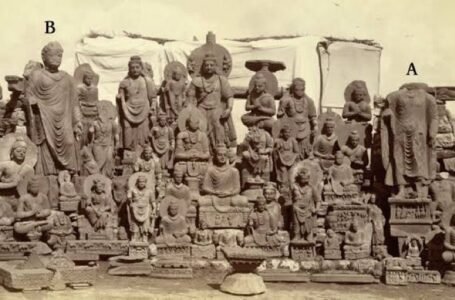Colonel Megh Singh Rathore: The Father of Indian Special Forces

-Mili Joshi
Colonel Megh Singh Rathore, Vir Chakra, has been revered as perhaps the foremost in the Indian military firmament. The father of modern Indian Special Forces, this extraordinary officer’s legacy continues to appeal to generations of soldiers and military leaders. His visionary concepts of training, with an eye toward the very unconventional warfare he practiced, were allied to a moral courage that earned him respect from all of the truly elite military men of the world.
Early Life and Military Background
Colonel Megh Singh Rathore came from a proud warrior tradition of Rajasthan, born in a Rathore Rajput family embodying the martial spirit of their forebearers. He was enrolled in military service initially by joining Patiala forces and was then commissioned into the 3rd Gorkha Rifles of the Indian Army. This early association with the Gorkhas, recognized for their extraordinary bravery and loyalty, was to play a key role in shaping his notions of elite soldiering and the unconventional tactical operations of warfare.
From his early days of service, Rathore was an innovator with a penchant for challenges that could not find fulfillment in standard military doctrine. His keen interest in guerrilla warfare and special operations separated him from his contemporaries and put him in the ranks of officers of exceptional potential for specialized military operations.
The Demotion That Changed History
The most fascinating part, perhaps, is Colonel Rathore’s story of how a professional disappointment set off the chain of events leading to the formation of the most elite military force in India. This unfortunate event, involving Major Megh Singh, took place about a month before the 1965 Indo-Pakistan War and is now almost a part of military folklore: court-martialed and put on an unmerited demotion, he found himself with limited activity in a training assignment in Shimla while other soldiers sought after the thrill of combat he craved.
But fate was set to intervene: with the war of 1965 came the need for the Indian Army to seek out officers able to conduct unconventional operations behind enemy lines. As his demotion was recent, Major Rathore’s tactical acumen and knowledge of special operations fitted well with such missions. The crisis became a tipping point, changing Indian military capabilities for all time.
Birth of the Meghdoot Force
When Lieutenant General Harbaksh Singh approached Major Rathore with the suggestion of launching deep penetration strikes against Pakistan, he saw an opportunity to put into action what he had been dreaming about for years in terms of developing innovative and revolutionary concepts on special operations. The scheme he proposed was indeed extremely bold – creating a very small, highly trained volunteer force to penetrate deep into enemy territory, causing maximum destruction, and then swiftly escaping before the enemy can respond effectively.
Given total liberty to choose his men, Major Rathore gathered what was ultimately going to be known as the Meghdoot Force. Justified was the name “Meghdoot” (cloud messenger) because these men would move much like clouds-certainly swift, silent and possess an ability to appear before anything before they get warned. This informal identification was geared toward unorthodox modus operandi of the unit, as the unit was not resourced by the government but directly approved by field commanders who recognized its operational potential value.
The recruitment process was quite arduous for the Meghdoot Force. Rathore himself selected every member by virtue of their fitness levels, mental toughness and adaptability, importantly the readiness to volunteer on missions that were extremely dangerous and with uncertain outcome. This selection process meant that each and every member of the force shared the same commitment to excellence and mission success that his leader embodied.
The 1965 War Operations
It was during the 1965 Indo-Pakistan War that the Meghdoot Force truly came to test its strength, mainly when it was mobilized for operations between September 1 and 11, 1965. Leading successfully from the front, Major Rathore and his team conducted three very important raids across deep Pakistani territory in the Jammu and Kashmir sector. The operations were notable for being precision strikes, effective blows, and psychologically demoralizing strikes against enemy forces.
These raids were not merely tactical successes; they were strategic masterpieces. They portrayed the potential of special operations in modern warfare. Freedom in strike at will behind enemy lines; disruption to supply chains; intelligence gathering of enemy acts; and retiring before conventional troops could be applied by the Meghdoot Force showed the viability of unconventional warfare tactics in the Indian military context.
These operations caught the Pakistani military off-guard and revealed another landscape in Indian military capability that the enemy had not imagined. Much has been said about these missions, and they have provided formative lessons for the building of what would become India’s formal special forces doctrine.
Recognition and the Vir Chakra
Major Rathore’s impressive leadership and valor during these operations led him to receive the Vir Chakra, which is the third-highest gallantry award for wartime in India. His citation reads: “Lieutenant Colonel Megh Singh, then a Major, was associated with a Brigade in Jammu and Kashmir and carried out three very successful important raids into enemy territory between 1 and 11 September 1965”.
The award was not only a personal justification by an officer who downgraded but also official recognition of the long overdue exceptional value of special operations in contemporary warfare. The announcement of Major Megh Singh’s Vir Chakra by All India Radio tremendously boosted the morale of the Force at all levels and further cemented their trust in their mission and in their leader.
Legacy and the Birth of 9 Para (Special Forces)
The success of Meghdoot Force operations in the 1965 war convinced military leadership that a special forces capability was needed as a permanent feature of the Indian Army. Major Rathore’s lessons in unconventional warfare became the building blocks upon which were based the 9th Battalion, Parachute Regiment (Special Forces), popularly called 9 Para (SF).
Lieutenant Colonel Megh Singh later commanded the 9 Para (SF), which evolved from his original Meghdoot Force concept. He was, in fact, the father of the Army Special Forces, a title he earned for his role in setting up the Army Special Forces. This formal recognition now ensures that he is remembered as a leading name in the establishment of special operations in India.
All organizational structure, selection criteria, training methodologies, and operational doctrine that Rathore developed for Meghdoot Force became a model for all subsequent special forces units in the Indian military. The system he established, focusing on rigorous selection, intensive training, operational flexibility, and a mission-first outlook, still defines Indian special forces today.
Innovation in Military Doctrine
Colonel Rathore’s contributions were not only specific to the formation of a military unit but also dealt with giving a complete orientation in the approach of the Indian military towards unconventional warfare. The relationship that small, highly-trained teams have with achieving ends traditionally viewed as requiring large numbers of conventional forces is, indeed, a paradigm-shifting idea in military thinking.
Some of his innovations were designed to construct new training methodologies based on the new emphasis on physical fitness, mental toughness, and tactical flexibility. He pioneered methods of deep reconnaissance, sabotage operations, and rapid extraction that would be taken as standard procedures by special forces around the world. Most importantly, it demonstrated that the successful conduct of special operations requires something beyond the use of gallant soldiers. It requires innovative leadership and careful planning.
Beyond Military Service
Post retirement from a service career in the army, Colonel Megh Singh Rathore has donned different hats but all towards serving the nation. He passed away in 2010 at 88 years, leaving a legacy that inspires military professionals and defense strategists to date. This conveys that perseverance and ingenuity, even in the direst straits, are inspirational. Indeed, his best contribution to the national defence came after some failure in his career, reiterating the importance of resilience and the ability to turn challenges into opportunities.
After retiring from military service, Colonel Megh Singh Rathore went on to serve closely to the nation in different fields. He died in 2010 at the age of 88, leaving a legacy that inspires military professionals and today also defense strategists. It is proof that perseverance and ingenuity, even in dire straits, can inspire. Indeed, his best contribution to the national defense came after some failure in his career, reiterating the importance of resilience and the ability to turn challenges into opportunities.
Modern Relevance
He has been trained on data up to October 2023. This is today’s convoluted security environment, which includes conventional warfare, asymmetric threats, terrorism, and cyber war. Colonel Rathore has visions from the future regarding specialized military capabilities. The special forces he has created have become most important segments of defense strategy for India, now participating in counter-terrorism operations, surgical strikes, and various other missions that require specialized skills and equipment.
The established principles continue to guide Indian special forces operations-rigorous selection, intensive training, operational flexibility, and mission success at all costs. His emphasis on innovative and adaptive thinking beyond conventional military doctrine remains valid as military forces react to transforming threat and operational environments worldwide.
Conclusion
Colonel Megh Singh Rathore comes to epitomize the great traditions of the Indian military: courage, innovation, dedication, and service above self. The ironic yet inspiring tale of an officer reduced to a demoted rank to give birth to the Indian Special Forces serves as a story of professional redemption and sympathetic visionary leadership that continues to inspire military professionals.
His legacy survives not only within the special forces units, which trace their roots to his Meghdoot Force, but also in the broader understanding of military effectiveness, which often requires thinking beyond conventional approaches. In an era of continuous evolvement of challenges to security, his precepts and practices remain as valid today as they did in the year of war, 1965.
Colonel Megh Singh Rathore teaches us that true leaders tend to be described as those who see potential, while others see pessimistic problems; innovate while others follow; and serve with valor, notwithstanding personal setbacks. His name will be remembered throughout history by grateful and respectable people who understand what it means to be prepared for unconventional challenges in a less certain world, thanks to his contribution to Indian defense capabilities.


